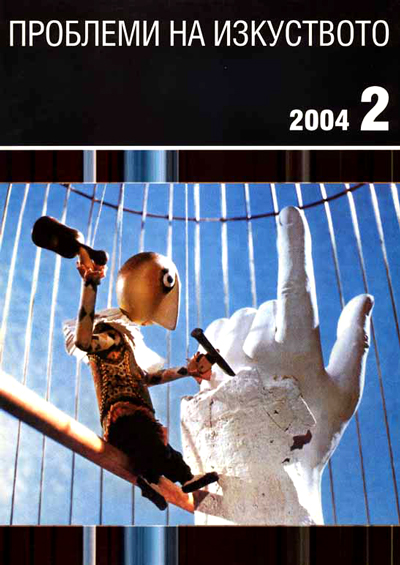Новото западноевропейско кино и стереотипът на разделението
Contemporary West-European Cinema and the Stereotypes of Division
Author(s): Ingeborg Bratoeva-DaraktchievaSubject(s): Philosophy, Fine Arts / Performing Arts, Visual Arts, Aesthetics, Film / Cinema / Cinematography
Published by: Институт за изследване на изкуствата, Българска академия на науките
Summary/Abstract: This article, based on the analysis of 25 European films, shot in the period 1973-2003, examines the identity construction in the new West European cinema. The study has a strong focus on works, produced in the last five years, which display a strong tendency to adjust to new European realities the hardened stereotypes, inherited from the Epoque of the Cold War. The West European film- makers tend to represent the crisis of European identity, set in after 1989, as an exclusively East European dilemma. They keep reproducing the well-known stereotype of Western self-identification: a hero, bearer of civilization and humanity, and they persist in multiplying the familiar negative type: the East European, made in the “empire of evil”. After 1995, the negative Eastern stereotype went through a significant transformation: the anti-hero/anti-heroine discarded his/her communist or KGB identity. In recent time, he/she emerges on screen as a Mafioso, or as a criminal, or as a pimp, or as a prostitute, in the best case, as an illegal emigre. Thus, the East European demonstrates on screen three fixed qualities: he/she is irrational, he/she cannot adapt to the Western culture, and he/she is generally characterized as a marginal white. The commonly negative representations of “the other” hindered European cinema from developing a hero with multiple identities who could mediate between the East and the West. We can conclude that in the last decade European cinema reanimated the opposition East-West, and continued to promote negative stereotypes of otherness and difference, in contrast to the process of political unification of Europe. Nevertheless, many European film- makers bear in fact multiple identities. Some of them began to destroy the deep-rooted models of contradiction between the European East and the European West and tried to present on a screen a new concept of interaction and mutual understanding. We regard this development as the most productive tendency in the recent European cinema.
Journal: Проблеми на изкуството
- Issue Year: 2004
- Issue No: 2
- Page Range: 27-30
- Page Count: 4
- Language: Bulgarian
- Content File-PDF

